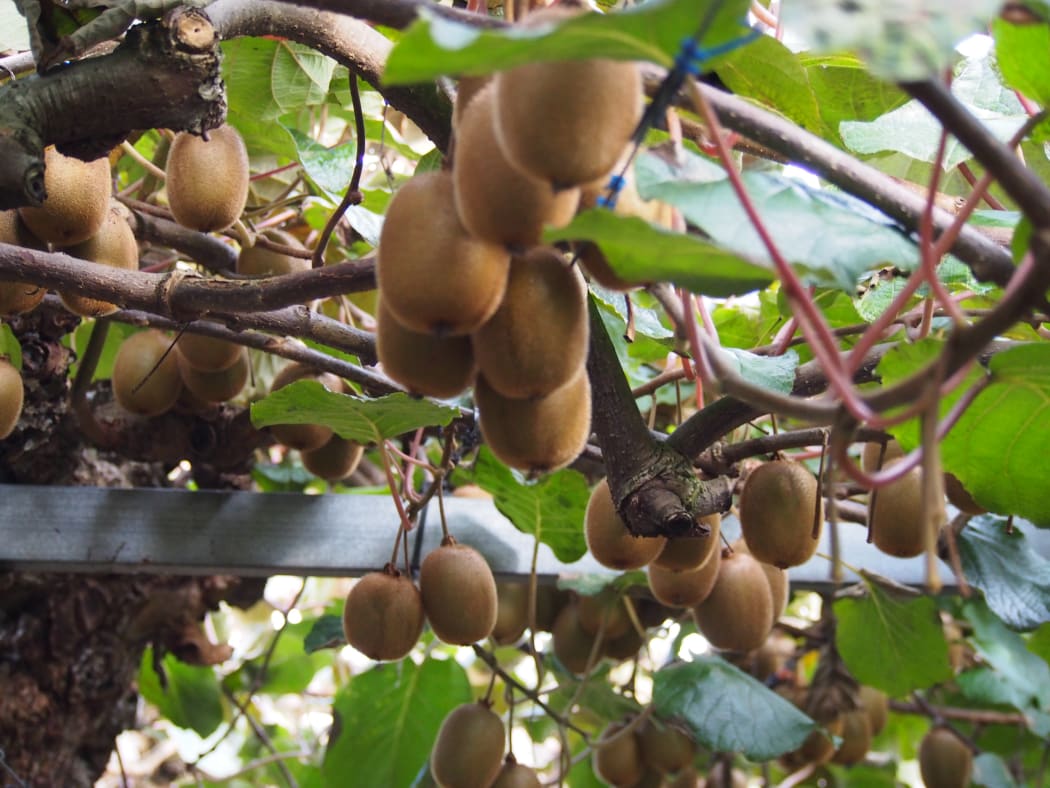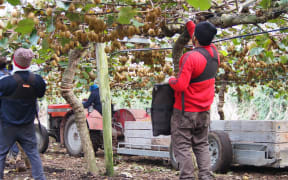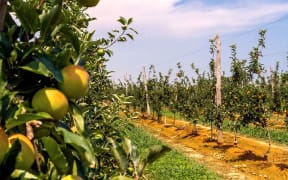More needs to be done to deal with severe horticultural labour shortages, which will only get worse, fruit growers in Tasman say.

Photo: RNZ/Susan Murray
Two big storms at the height of summer dented not only the region's reputation as a nice place to visit, but much of the accommodation needed for harvest workers. That combined with a larger-than-usual fruit crop and earlier-than-usual onset of G3 gold kiwifruit.
Lower Moutere grower Ian Palmer said it had been the hardest season he has known for finding staff in 30 years of growing fruit.
The warning signs emerged in December.
"The number of people coming in my drive this year have been very, very low. My phone number is well out there among backpackers but I just didn't get a lot of calls - in fact in December ... I got zero calls."
The Ministry of Social Development declared a seasonal labour shortage across the region on 5 April which meant people on overseas visitor visas could apply for permission to work.
Mr Palmer said it was a nice idea but did not seem to be working.
"I'm not sure we added many more people to the workforce from the labour shortage declaration but what it was, was a strong signal that even through the proper channels we're not getting enough people available for peak harvest periods."
Indeed, Immigration New Zealand had received just 36 such applications to date, including earlier applications in connection to the Hawke's Bay labour shortage which was extended to 29 April, area manager Stephanie Greathead said.
It was also unclear how many of those applications were for the Tasman region.
"Due to the way the information is captured there is no way to decipher what regions the VOC (visa variations) are related to," Ms Greathead said.
The Ministry also drew on its Seasonal Work Scheme, which helped Kiwi workers move to areas with seasonal labour opportunities.
It said 28 people arrived in the region through the scheme since October last year, and 10 were currently completing their arranged employment period.
Richmond grower Dennis Cassidy said it worked well, until the weather got cooler.
"Later in the season it gets more difficult because generally after a month or six weeks, which most of them will commit to, they want to move on and they're generally going north to the warmer weather where the nights are a bit warmer. They're usually sleeping in vans and things."
Mr Palmer said a solution lay with the Recognised Seasonal Employer scheme, which allows growers to recruit workers from overseas when there are not enough locals. The cap has been lifted five times already, from 5000 places in 2007 to just over 11,000 now.
Mr Palmer said it might be time to do so again.
"I think we need to look at whether the RSE scheme numbers can be increased for the peak harvest periods. That's where the reliable workforce can come from.
"We got less unemployment in the Nelson-Marlborough region - considerably lower than the average, so we've effectively used up all available labour."
Mr Palmer said demand for seasonal labour would continue to increase throughout the country.
The seasonal labour shortage declaration in Tasman is due to be lifted next week.




